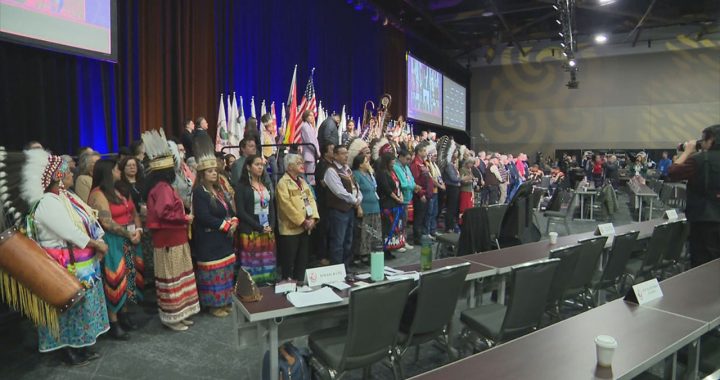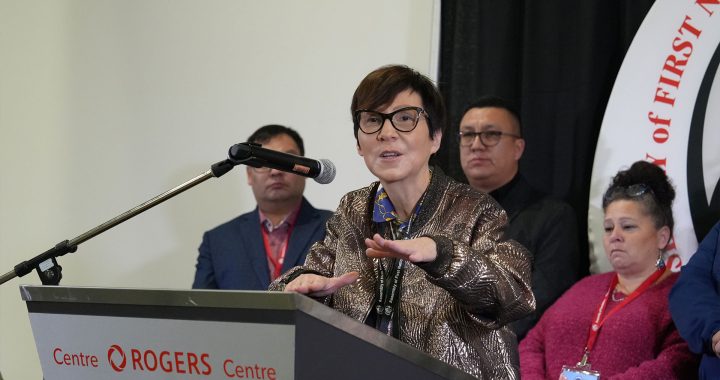
A legal battle playing out in a northern Ontario courtroom this month has seen an alliance of First Nations argue they are owed upwards of $100 billion for the Crown’s failure to honour a 173-year-old treaty promise, while the federal and provincial governments claim they are either owed far less, or nothing at all.
The case being heard in Thunder Bay, Ont., could have historic implications for First Nations representing roughly 15,000 Anishinaabe people along the northern shores of Lake Superior and is being closely followed by legal observers.
At the centre of the trial – which is currently hearing closing arguments – is what the First Nations argue is a broken treaty promise that has resulted in a generations-long sentence to poverty while non-Indigenous communities thrived from the territory’s resource wealth.
“This case is about righting wrongs and, finally, the government adhering to the treaties that were in place, and the First Nations getting what they’re owed,” Chief Marcus Hardy of the Red Rock First Nation, one of the Nations behind the claim, said in an interview.
Anishinaabe leaders signed two treaties in 1850 covering territory along the northern shores of Lake Superior and Lake Huron, stretching from what’s now Thunder Bay, Ont., south toward Parry Sound, Ont.
As part of those agreements _ known as the Robinson-Superior and Robinson-Huron treaties _ the Crown promised an annuity to the Anishinaabe and included a unique clause to increase the annual payment as resource revenue permitted.
That annuity was first set at around $1.60 per capita, and has only been increased once, to $4 in 1875. Now, the First Nations argue they are owed billions.
Indigenous legal experts say the decision in the case could affect other treaty negotiations.
“The concepts of sharing and resource benefit sharing _ they’re really things that we have to talk about in what we call implementing historic treaties,” said Sara Mainville, a former chief of the Couchiching First Nation and partner at JFK Law, whose practice areas include Indigenous self-government and treaty implementation.
Superior Court Justice Patricia Hennessy ruled in 2018, as part of the first stage of the case, that the Crown had a duty to engage with the Anishinaabe in a process to increase the annuities when economic circumstances permitted.
Earlier this year, Canada and Ontario agreed to a separate proposed settlement that would, if ratified, see them each pay $5 billion to the 21 First Nations covered by the Robinson-Huron treaty.
But lawyers for the First Nations covered by the Robinson-Superior treaty say no reasonable offer was made to their clients, leading to the current case moving ahead. Those lawyers argue the First Nations are owed up to $126 billion.
They say the judge hearing the case is not only being asked to set out guideposts for how to determine what’s owed to the First Nations, but also potentially groundbreaking principles for how the treaty will be honoured in the future.
Chief Hardy said the decision could help set the “building blocks in order to move ahead” with the future of treaty relations and First Nation self-government.
“Even though it will enrich our First Nations members’ lives _ it will enrich our future generations’ lives _ what’s more important is the acknowledgment and following the treaty in the future,” he said.
The judge’s decision will weigh testimony about how much money the Crown made in resource revenues over the past 170 years, what resources to include and what expenses to subtract, what portion of those revenues were to be shared with First Nations, how to calculate the interest rate, and how to divvy up liability between Canada and Ontario.
“A court’s decision on how to bring forward the money or how to calculate what is fair compensation for decades of losses is going to be influential in guiding negotiation tables across the country,” said Michael Coyle, a professor in Western University’s faculty of law who specializes in treaty and Indigenous rights.
Lawyers for Canada have argued in written submissions that the First Nations’ compensation claim relies on a model that captures the total value of the territory’s resource wealth, above what the Crown earned directly on those resources through levers such as taxes.
They say that model does not reflect a “realistic shareable amount” and suggest the compensation award should be in the range of $578 million to $2.45 billion.
Lawyers for Ontario, meanwhile, argue in written submissions that the First Nations are owed nothing, or at most $86 million, because the Crown has spent more money than it’s made trying to develop the resources in the area covered by the Robinson-Superior treaty.
That’s a position that “defies reasonableness and logic,” argues Harley Schachter, a lawyer representing the First Nations who has been working on the case for more than 20 years.
“If that were true, then … sometime in the ’50s or ’60s, the Government of Canada should have come to the Anishinaabe and said, ‘my gosh, we can’t make a go of it, here’s $2 billion, $3 billion, just take that money and take the land back, take the waters back,” he said in an interview.
Ontario has also asked in its written submission for the court to hold off on a decision until the Supreme Court of Canada hears an appeal on the treaty’s interpretation. That appeal is scheduled to be heard in November.
In documents filed with the Supreme Court, Ontario has argued the treaty interpretation could pose significant consequences for its finances and its ability to balance different public needs.
A spokesperson for Ontario’s Ministry of Attorney General said the province’s appeal to the Supreme Court “will address issues that remain relevant between the parties in both actions.”
In a brief statement, a federal spokesperson for Crown-Indigenous Relations said negotiated agreements are preferred but the government respected the First Nations’ decision to try the case.
Closing arguments in the current case are expected to wrap this month.










